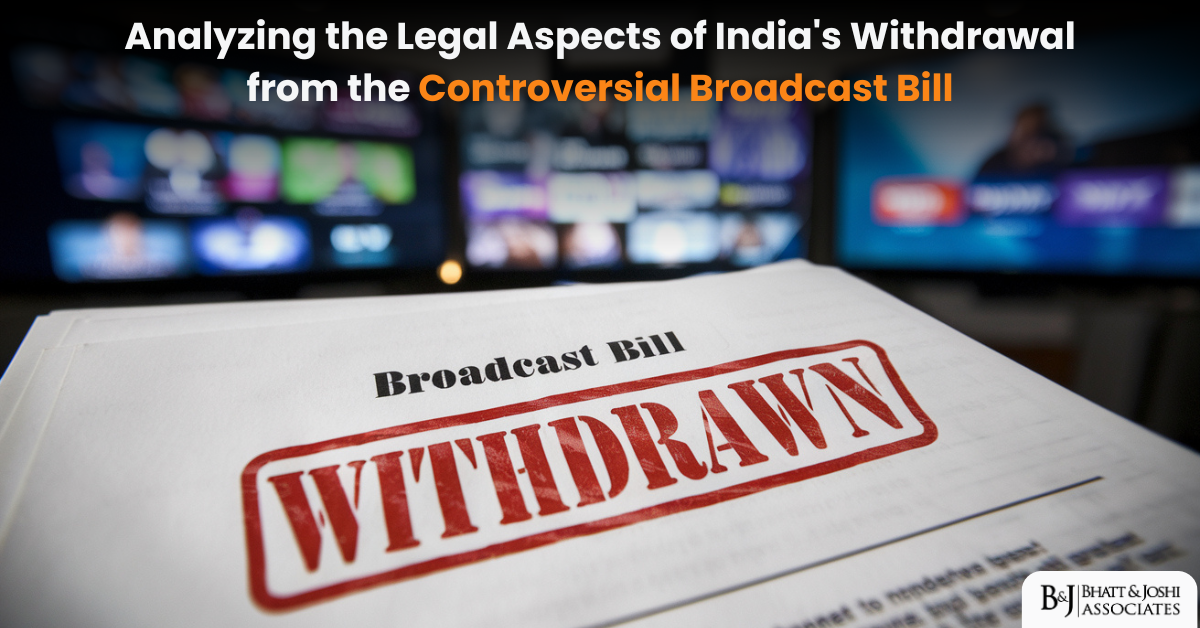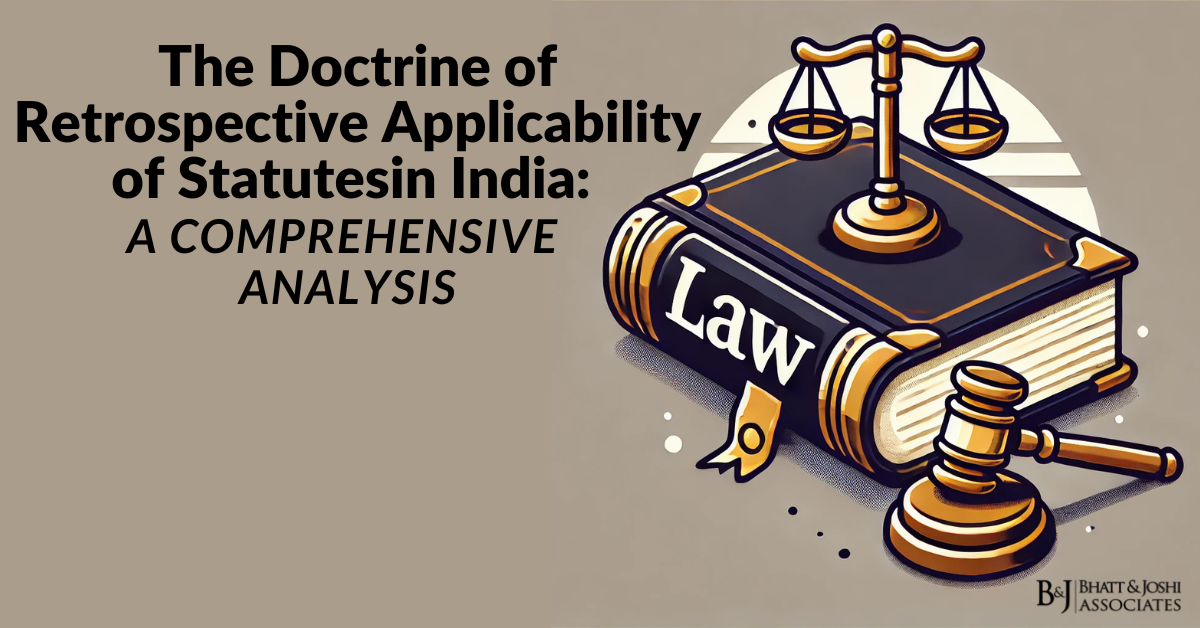Introduction
Background of the Broadcast Bill
The Indian broadcasting sector has witnessed exponential growth over the years, encompassing television, radio, and digital streaming platforms. Despite its vast reach and influence, the sector has operated under a patchwork of outdated regulations. The primary regulatory framework for broadcasting includes the Cable Television Networks (Regulation) Act, 1995, and the Telecom Regulatory Authority of India (TRAI) Act, 1997. These statutes focus primarily on cable services and technical aspects of broadcasting, leaving significant gaps in addressing content-related issues, emerging technologies, and convergence between traditional and digital media.
The Broadcast Bill was envisioned as a comprehensive legislation to regulate all aspects of broadcasting, including licensing, content standards, and dispute resolution mechanisms. It proposed establishing an independent regulatory authority to oversee the sector and promote fair competition. However, concerns about the bill’s provisions, particularly regarding press freedom, regulatory overreach, and potential misuse, led to widespread criticism and, ultimately, its withdrawal. The bill also faced opposition for its perceived inability to address the fast-evolving challenges of the digital era, including the regulation of over-the-top (OTT) platforms and emerging social media dynamics.
Key Provisions of the Broadcast Bill
The proposed bill sought to unify and update the regulatory framework for broadcasting. Among its primary objectives was the establishment of a National Broadcasting Authority (NBA), envisioned as an independent body responsible for overseeing licensing and ensuring compliance with content guidelines. The bill introduced a graded system for penalties and sanctions, aiming to create a balanced approach to addressing violations without disproportionately affecting broadcasters. Public grievance mechanisms and robust dispute resolution systems were integral to the framework, reflecting a focus on accountability and transparency.
Another significant element was the emphasis on equitable spectrum allocation and access to broadcasting infrastructure. This provision aimed to level the playing field for new entrants while curbing monopolistic practices that dominate the current landscape. Regulations on cross-media ownership sought to preserve diversity in viewpoints and prevent market concentration. However, critics viewed these provisions as potentially stifling innovation and raising bureaucratic barriers for smaller players, intensifying concerns about the bill’s long-term impact on media plurality.
The provisions governing content standards were perhaps the most contentious. Broad and vaguely worded content guidelines raised fears of censorship and suppression of dissent. Journalists and media organizations voiced apprehensions about potential misuse of these provisions to silence critical voices, ultimately positioning the bill as a threat to freedom of expression.
Regulatory Landscape and Laws Governing Broadcasting in India
India’s broadcasting regulations are rooted in a fragmented and outdated legal framework. The Cable Television Networks (Regulation) Act, 1995, primarily addresses technical standards and licensing for cable television services. The TRAI Act, 1997, empowers the Telecom Regulatory Authority of India to regulate tariffs, interconnections, and service quality in broadcasting and cable networks. While effective in managing operational aspects, these statutes fall short of addressing content and technological convergence.
The Prasar Bharati Act of 1990 grants autonomy to Doordarshan and All India Radio, India’s national broadcasters. However, this autonomy is often criticized as being nominal due to persistent governmental influence over public broadcasting. The content regulation landscape is further complicated by self-regulatory bodies like the News Broadcasters & Digital Association (NBDA) and the Indian Broadcasting and Digital Foundation (IBDF). While these bodies have developed codes of conduct and grievance redressal systems, their limited jurisdiction and non-statutory nature lead to inconsistent enforcement.
Legal Concerns and Judicial Interventions
The legal discourse surrounding the Broadcast Bill intersects with constitutional principles, particularly Articles 19(1)(a) and 19(2) of the Indian Constitution. While guaranteeing freedom of speech and expression, these articles allow reasonable restrictions in the interest of sovereignty, public order, and decency. The challenge lies in defining and applying these restrictions without overstepping constitutional bounds.
Judicial interpretations have significantly influenced the evolution of broadcasting regulations. The landmark case of Secretary, Ministry of Information & Broadcasting v. Cricket Association of Bengal (1995) declared that airwaves are public property, emphasizing their equitable use for promoting public good. This judgment underscored the need for a regulatory framework to ensure access and fairness in broadcasting rights.
The Anuradha Bhasin v. Union of India (2020) case further highlighted the role of media freedom in sustaining democracy. The Supreme Court ruled that any restrictions on media access must meet proportionality and necessity tests, reinforcing the delicate balance between regulatory authority and individual rights. These judicial precedents underscore concerns that the Broadcast Bill’s broad provisions could disrupt this balance, raising the specter of legal challenges.
Reasons for Withdrawal of the Broadcast Bill
The decision to withdraw the Broadcast Bill reflects a confluence of legal, technological, and socio-political factors. Stakeholder opposition played a decisive role, as media organizations, journalists, and civil society groups expressed concerns about its potential to curtail press freedom and centralize control over content. The bill’s inability to address the rapid convergence of telecommunications, broadcasting, and digital media posed another significant challenge. With digital platforms increasingly dominating the media landscape, the bill’s focus on traditional broadcasting seemed outdated and ill-suited to contemporary realities.
Comparisons with global regulatory practices revealed that democracies with vibrant media ecosystems often prioritize self-regulation and minimal state intervention. This realization spurred calls for a similar approach in India, challenging the bill’s perceived overreach. Additionally, anticipated legal challenges to the bill’s constitutionality and its impact on Article 19 rights influenced the government’s decision to reconsider its approach. The economic implications of the bill, particularly for smaller broadcasters and emerging players, further fueled resistance, highlighting the need for an inclusive and adaptable regulatory framework.
Implications of the Withdrawal of the Broadcast Bill
The withdrawal of the controversial broadcast bill leaves the broadcasting sector grappling with regulatory ambiguities. Without a unified framework, inconsistencies in standards for traditional and digital media persist, complicating enforcement and compliance. The absence of robust cross-media ownership regulations perpetuates monopolistic practices, undermining the diversity of perspectives that form the cornerstone of democratic discourse. Consumer protection mechanisms, including grievance redressal and quality assurance, remain inadequate, eroding public trust in the broadcasting sector.
Conversely, the decision underscores the importance of stakeholder engagement and constitutional alignment in policy-making. It presents an opportunity to reimagine media regulation through a collaborative and forward-looking lens. This moment of introspection could pave the way for reforms that harmonize technological advancements, industry needs, and public interest.
Comparative Analysis with International Practices
Globally, media regulation reflects diverse cultural, legal, and political contexts. In the United Kingdom, Ofcom’s role as an independent regulator encompasses broadcasting, telecommunications, and postal services. Its emphasis on fair competition, diversity, and consumer protection offers valuable insights for India. Similarly, the Federal Communications Commission (FCC) in the United States balances regulatory oversight with robust First Amendment protections, fostering a vibrant media environment.
Australia’s Australian Communications and Media Authority (ACMA) integrates broadcasting, telecommunications, and online content regulation, emphasizing transparency and stakeholder participation. These frameworks highlight the importance of adaptability and industry collaboration, principles that India could incorporate into its regulatory approach. By aligning with global best practices, India can craft a media governance framework that accommodates its unique socio-political and technological landscape.
The Role of Digital Media and Emerging Technologies
The digital revolution has transformed the media landscape, challenging traditional regulatory paradigms. Over-the-top (OTT) platforms, social media, and streaming services have redefined content creation, distribution, and consumption. The Broadcast Bill’s inability to address these shifts exposed its limitations and underscored the need for a comprehensive framework that bridges the gap between traditional and digital media.
The Information Technology (Intermediary Guidelines and Digital Media Ethics Code) Rules, 2021, represent a step toward regulating digital platforms. However, their broad scope and contentious provisions have sparked debates about free speech and platform accountability. A harmonized regulatory framework that integrates traditional and digital media standards is essential to navigate the complexities of convergence and safeguard democratic values.
Way Forward
The withdrawal of the Broadcast Bill should serve as a catalyst for constructive dialogue and reform. Strengthening self-regulatory mechanisms can empower industry bodies to establish and enforce standards while ensuring accountability. Engaging diverse stakeholders—media organizations, civil society, legal experts, and technologists—can foster consensus on regulatory priorities. Adopting a sector-neutral approach that acknowledges media convergence and aligns with global standards can enhance regulatory coherence and effectiveness.
Judicial guidance remains a cornerstone of reform, offering a constitutional compass to navigate challenges. Public awareness initiatives can deepen understanding of media regulation’s implications for democracy and individual rights, fostering informed engagement with policy debates. By embracing these strategies, India can chart a path toward a resilient and inclusive media governance framework.
Conclusion
India’s decision to withdraw the controversial broadcast bill reflects the complexities of regulating a dynamic and influential sector. While the bill’s objectives were commendable, its perceived flaws necessitated a re-evaluation. This moment presents an opportunity to reimagine media regulation through a collaborative, rights-centric lens. Balancing innovation, accountability, and constitutional safeguards will be pivotal in shaping the future of broadcasting governance. As India navigates this evolving landscape, it has the potential to craft a regulatory framework that serves as a global benchmark for media governance in the digital age.














